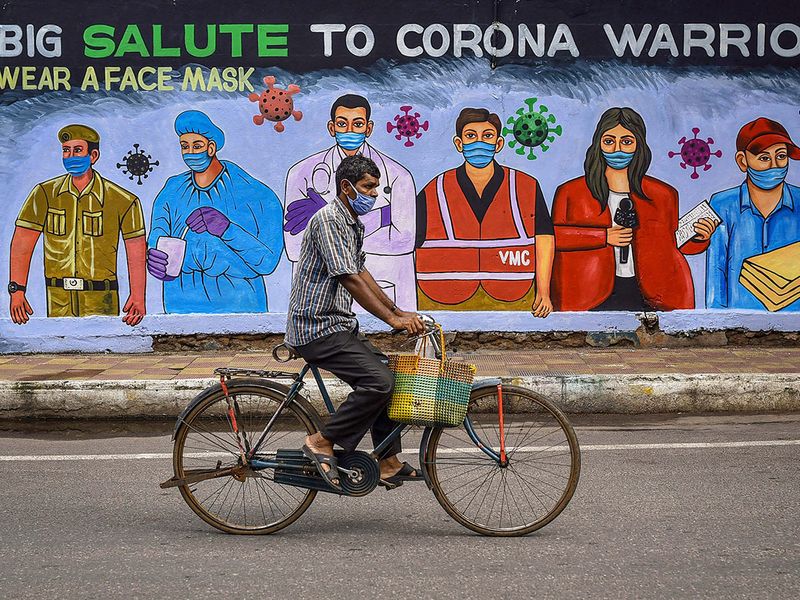Although the G20 countries have taken stock of the world economy ravaged by the COVID-19 pandemic that broke out early 2020, there is still no answer to the all-important question of whether things will return to normal and, if so, when and how. Work from home in most cases seems to be all set to continue for quite some time and popular entertainment like watching movies in cinema theatres and the joy of spending time in shopping malls, travelling to beaches and other vacation spots (through airports and rail stations) and sports events which will be teeming with people still seem to be a scary thought.
Recently, The Economist has formulated a ‘normalcy index’ to find out how human behaviour has changed and is still undergoing transformation due to the pandemic. It has used eight broad parameters grouped into three to get a fair idea about the current reality.
These are transport and travel, recreation and entertainment, work and footfall in shops and occupancy in offices.
Under the grouping of transport and travel, it has measured the volume of public transport in big cities, the amount of traffic congestion in those same cities and the number of international and domestic flights. To find the state of affairs in recreation and entertainment, it has used the yardsticks of how much time is spent outside the home, cinema box-office revenues that reflect the presence of patrons and attendance at professional sports events. Footfall in shops and occupancy of offices give indications of the work life of people in big cities.
The survey has covered 50 of the world’s largest economies that together account for 90 per cent of global GDP and 76 per cent of the world’s population. The global normalcy index nosedived in March 2020 following draconian restrictions imposed by many countries on their citizens. Since then it has been steadily improving and as things stand now, the world has gone back nearly two-thirds to pre-pandemic life. Indicators, such as retail footfall and time spent outside have recovered faster than others, particularly sports attendance and flights, even though the global average does not truly reflect the variations in different specific countries.
Activity in none of the countries, where the survey has been conducted, has returned to normal. China briefly reached pre-pandemic levels during its celebrations for the lunar new year in February, facilitated partly by record-breaking box-office receipts. Denmark currently is at the top of the table, closely followed by Pakistan and the Czech Republic. Vietnam, which imposed restrictions after its first significant wave of COVID-19 infections caused by the more transmissible Delta variant, is showing signs of rapid recovery. Of the 50 countries covered by the survey, 37 are moving fast towards normality.
The major sign of recovery and the stepping stone into return to normal is the resumption of public transport. Levels of traffic congestion have rebounded, too. Yet, flights remain grounded in many countries because government restrictions put a brake on international travel. This is an area where the Centre and the state governments of India have to work hard and take steps ensuring COVID appropriate behaviour is enforced, instead of using the cover of fear of fresh waves to hide their inefficiency and refusal to act when people are finding it so difficult to make both ends meet.
When lockdowns were the norm in March-April 2020 and 2021, time spent outside the home fell by 20 per cent, according to the global average. The pandemic wrought havoc on the film industry and sports during this period. The closure of cinemas and sports stadiums caused activity in those venues to drop to zero. Since then they are showing a slow trajectory of recovery. Interestingly, the survey has found the cinemas have got a big boost from the release of the latest James Bond film, No Time to Die.
Zoom meetings and Amazon deliveries have been two prominent features of the COVID-19 pandemic recovery. It may take years before office occupancy rates will return to previous levels, but retail footfall has been remarkably strong since the middle of last year and is now even above pre-pandemic levels. This sounds most encouraging.
Shortly before the G20 summit held its deliberations October 30-31, International Labour Organisation (ILO) Deputy Director-General, Martha Newton, called on G20 countries to take action to support the travel and tourism industry that has been hit hard by the COVID-19 pandemic. This is because the coronavirus has decimated the world of work leading to the loss of 255 million jobs the world over in 2020 alone. This is four times more than what happened during the 2009 financial crisis. The tourism industry employs about 300 million workers globally, the lives of many of whom have become precarious or they have been forced to take up informal work to eke out a living. Governments the world over need to ensure safe workplaces, remove restrictions on travel and give priority to resumption of work. That, along with actions on the economic front, requires immediate attention.
